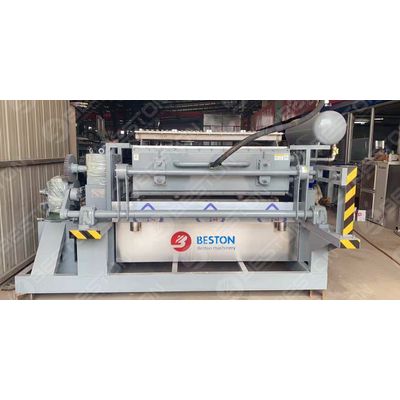

- Home
- Companies
- Beston Group Co., Ltd.
- Articles
- Hidden Costs in Nursery Tray Machine ...

Hidden Costs in Nursery Tray Machine Price: What Buyers Should Know
When considering the purchase of a nursery tray machine, the initial price often serves as the most visible factor in the decision-making process. However, there are several hidden costs that buyers may overlook, which can significantly impact the total expenditure over time. Understanding these additional expenses is essential for making an informed purchasing decision. This article highlights some of the less obvious costs associated with pulp molding machine price, ensuring that buyers are fully prepared for the financial commitment.
Installation and Setup Costs
One of the first hidden costs buyers may encounter is the installation and setup fee. Many nursery tray machines, particularly those with advanced features or custom specifications, require professional installation. This service is often not included in the initial price and can vary based on the complexity of the machine. Installation may involve configuring the machinery to fit the specific needs of the nursery, calibrating settings, and ensuring that it operates at peak efficiency. Depending on the service provider, these costs can range from a few hundred to several thousand dollars.
Maintenance and Repair Expenses
While the initial nursery tray machine price may seem affordable, the ongoing maintenance and repair costs can add up quickly. Routine maintenance, such as cleaning, lubricating moving parts, and inspecting mechanical components, is necessary to keep the machine in good working order. Additionally, wear and tear on certain parts may lead to costly repairs or replacements. Buyers should inquire about the average lifespan of the machine's components and the costs associated with maintaining them over time. A machine that requires frequent repairs or replacement parts can ultimately increase the total cost of ownership.
Energy Consumption
Another often overlooked expense is the energy consumption of the nursery tray machine. Depending on the size and type of machine, its energy requirements can be substantial. Some models are designed to be energy-efficient, while others may consume more electricity, leading to higher operational costs. Buyers should request information on the energy efficiency of the machine and consider the long-term utility costs. An energy-intensive model may initially appear to be a cost-effective choice, but over time, the cumulative energy expenses can surpass the price difference between models.
Operator Training
To operate a nursery tray machine effectively, proper training is required. In some cases, the manufacturer or supplier may offer training programs, but these services are often not included in the base price. Training costs can vary based on the machine's complexity and the level of expertise required. For buyers unfamiliar with the technology, investing in professional training may be necessary to ensure safe and efficient operation. Additionally, the need for ongoing education as machine upgrades or new models are introduced can incur further costs.
Warranty and Support Plans
Most nursery tray machines come with a standard warranty, but these warranties often cover only basic repairs and defects, leaving out many potential issues such as wear and tear or damage from misuse. Extended warranty or support plans, which provide broader coverage, are available for an additional fee. These plans can protect against unexpected repair costs, but they should be carefully evaluated to determine whether the additional expense is justified. Buyers should assess the cost-benefit ratio of purchasing extended coverage and consider the reliability of the machine and manufacturer reputation.
Shipping and Import Duties
For international buyers, shipping costs and import duties represent significant hidden expenses. The nursery tray machine price itself may be competitive, but shipping fees, customs duties, and other related expenses can quickly escalate the overall price. It is important to request a comprehensive breakdown of all shipping-related costs before finalizing the purchase. Additionally, depending on the region, delays in shipping or customs clearance may add to the overall time and cost of acquiring the machine.
Conclusion
While the nursery tray machine price is the starting point in any purchasing decision, buyers must account for the various hidden costs that can arise during the lifecycle of the machine. Installation, maintenance, energy consumption, operator training, warranty plans, and shipping fees all contribute to the true cost of ownership. By factoring in these potential expenses, buyers can make a more accurate and informed decision, ensuring that they are fully prepared for both the immediate and long-term financial commitments involved in purchasing a nursery tray machine.
